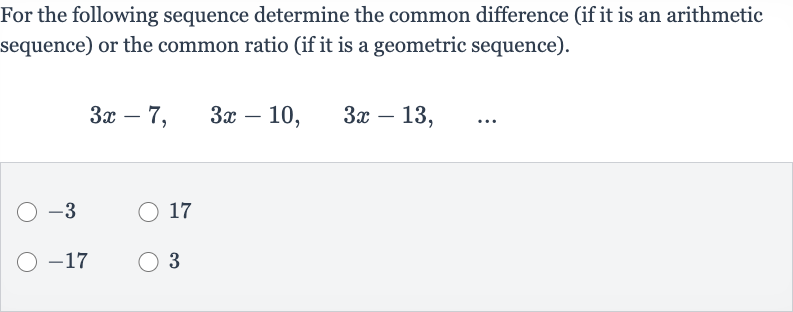Full solution
Q. For the following sequence determine the common difference (if it is an arithmetic sequence) or the common ratio (if it is a geometric sequence).
- Check Sequence Type: To determine if the sequence is arithmetic or geometric, we need to check the difference or ratio between consecutive terms.
- Find Difference: nd & st Term: First, let's check if it's an arithmetic sequence by finding the difference between the second and the first term: .
- Find Difference: rd & nd Term: Now, let's check the difference between the third and the second term: .
- Sequence is Arithmetic: Since the differences between consecutive terms are the same, the sequence is arithmetic, and the common difference is .
- Identify Common Difference: The common difference is not , , or , so the correct answer is .

